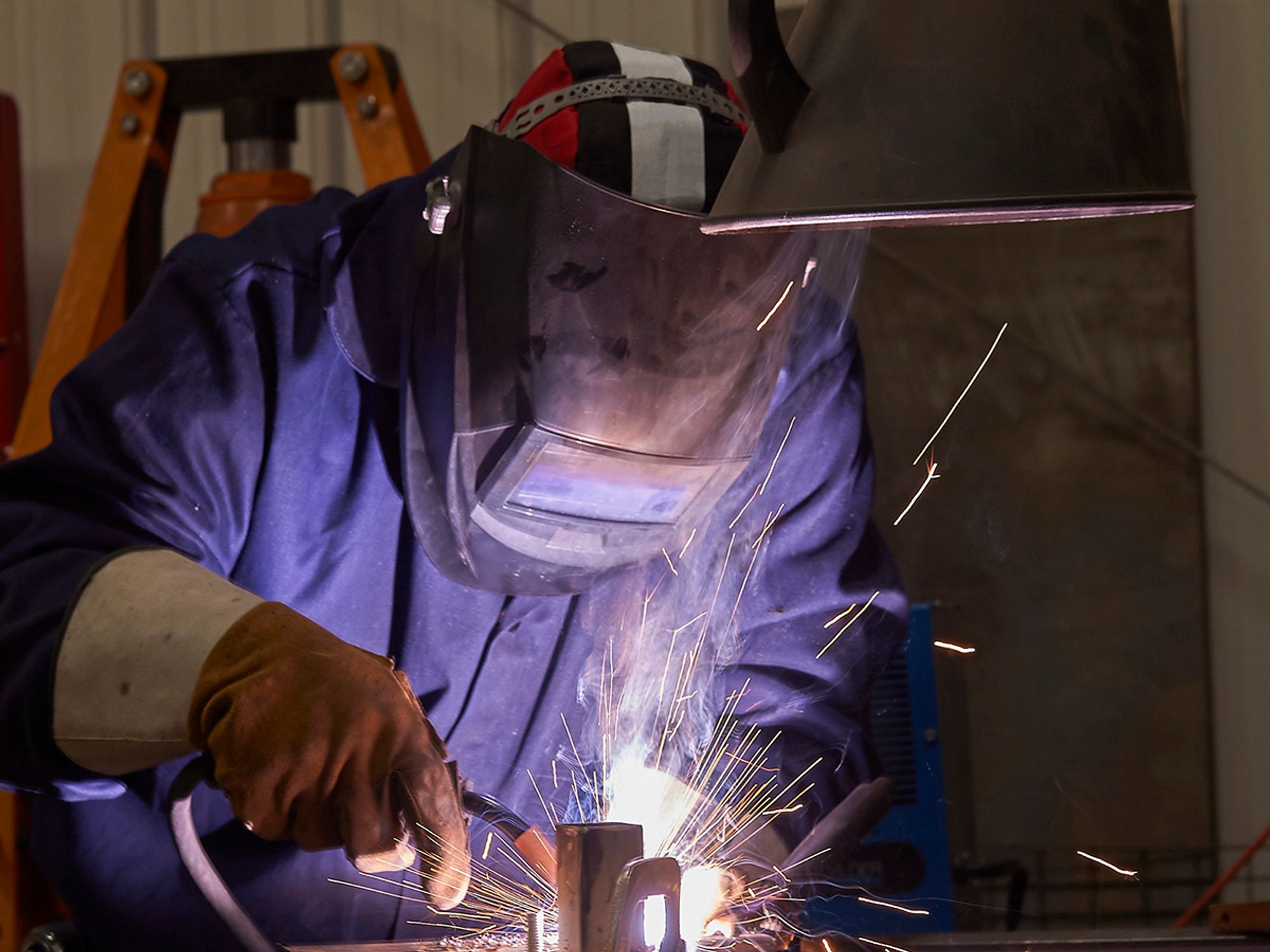Ventilation

- Due to the fumes, gases, and dusts involved in hot work, ventilation is an important part of performing this work.
- The primary tools used for ventilation are fans and exhaust systems, but respirators may be required in some circumstances, especially in confined spaces.
Welders can be exposed to a number of fumes, gases, and dusts. These contaminants can harm the health of workers and/or accumulate to the point of causing a fire. Ventilation helps to reduce the concentration of contaminants and prevent the accumulation of flammable gases, vapors, and dusts.
According to the Occupational Safety & Health Administration (OSHA), whenever and wherever welding occurs, everyone involved in the operation must be aware of welding fumes and gases and take necessary, especially ventilation, precautions. Even in metal cutting jobs that are considered routine, established safety procedures should always be followed.
Welding ventilation techniques vary. Often, however, a relatively simple ventilation method like the appropriate use of fans will be all that is required to provide good ventilation during hot work.
OSHA specifies in 1910.252(c) that if mechanical ventilation is used, it must consist of either:
- General mechanical ventilation, or
- A local exhaust system.
Related regulations
OSHA and the American National Standards Institute (ANSI) both have standards that can be relevant to ventilation during hot work:
- 29 CFR 1910, Subpart Q — Welding, Cutting and Brazing.
- 29 CFR 1926.55 — Gases, vapors, fumes, dusts, and mists.
- 29 CFR 1926.59 — Hazard communication.
- 29 CFR 1910.1200 — Hazard communication.
- 29 CFR 1926.103 — Respiratory protection.
- 29 CFR 1926 Subpart J — Welding and cutting.
- 29 CFR 1926.1126 — Chromium (VI).
- 29 CFR 1926.1127 — Cadmium.
- ANSI Z49.1-1967 — Safety in Welding and Cutting.
- 29 CFR 1910.252 — General Requirements.
Types of ventilation
Ventilation can be provided by a general mechanical or local exhaust system. Open spaces can also help to reduce accumulations.
General mechanical ventilation lowers contamination levels by using fans of various types to dilute the contaminated air with fresh air. OSHA requires mechanical ventilation to be provided when welding or cutting is done in certain circumstances on most metals, with some exceptions (including zinc, lead, cadmium, beryllium, and mercury) that have more specific requirements. Mechanical ventilation is required when welding is performed:
- In a space of less than 10,000 cubic feet per welder;
- In a room with a ceiling height of less than 16 feet; or
- In confined spaces or where partitions, balconies, or other structural barriers significantly obstruct cross ventilation.
Outside of these conditions, natural ventilation is considered sufficient.
Local exhaust systems remove fumes and smoke at the source using either of the following:
- A hood. This is movable so that the welder can place it as close as possible to the work. It must be able to maintain a minimum airflow of 100 feet/minute toward the hood.
- A fixed enclosure. This is a booth with a top and at least two sides surrounding the welding or cutting operation. It must be able to maintain a minimum airflow of 100 feet/minute away from the welder.
The need for local exhaust ventilation for welding or cutting outside of confined spaces depends on the individual circumstances. However, it is recommended for fixed-location production welding and for all production welding on stainless steels.
Ventilation in confined spaces
All welding and cutting operations in confined spaces must be adequately ventilated to prevent toxic material accumulation or oxygen deficiency. Only clean, breathable air can be used to replace air withdrawn from the confined space.
If it’s not possible to provide adequate ventilation, workers must use airline respirators or hose masks approved by the National Institute for Occupational Safety and Health (NIOSH).
